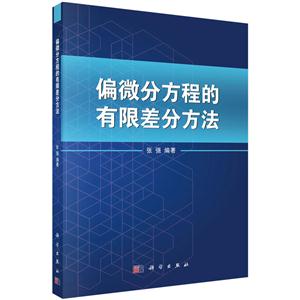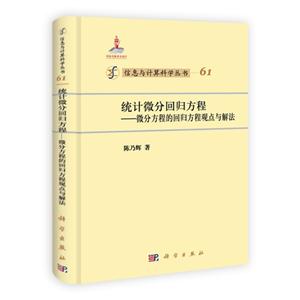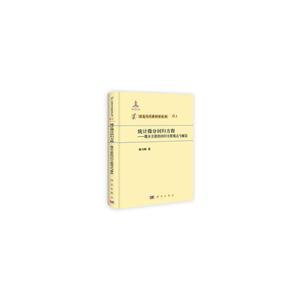
作者:L.V.Ovsyannikov,N
页数:141
出版社:高等教育出版社
出版日期:2013
ISBN:9787040369441
电子书格式:pdf/epub/txt
内容简介
《非线性物理科学:微分方程群性质理论讲义》提供了确定和利用微分方程对称性的李群方法简明和清晰的介绍,并提供了在气体动力学和其他非线性模型中的大量应用,以及《非线性物理科学:微分方程群性质理论讲义》作者在这个经典领域的卓越贡献。《非线性物理科学:微分方程群性质理论讲义》中还包含在其他现代书籍中不曾涉及的一些非常有刚的材料,例如:Ovsyannikow教授发展的部分不变解理论,该理论提供了求解非线性微分方程和研究复杂数学模型强有力的工具。
作者简介
L.V.Ovsyannikov,教授是20世纪60年代促进恢复微分方程群分析研究的领军科学家。他在不变解和部分不变解理论、微分方程群分类以及流体力学中的应用方面作出了基础性的贡献。在Ovsyannikow教授的影响下,李群分析目前已经发展成应用数学方面相当活跃的领域。
本书特色
奥夫斯亚尼科夫编著的《微分方程群性质理论讲义(精)》简介:The theory of differential equations has two aspects of investigation, namely local and global, no matter whether the equations arise from applied problems of physics and mechanics or from abstract speculations (which is rather frequent in modern mathematics). The local aspect is characterized by dealing with the inner structure of a family of solutions and its investigation in a neighborhood of a certain point. The global approach deals with solutions defined in some domain and having a given behavior on its boundary.
目录
Preface
1 One-parameter continuous transformation groups admitted by differential equations
1.1 One-parameter continuous transformation group
1.1.1 Definition
1.1.2 Canonical parameter
1.1.3 Examples
1.1.4 Auxiliary functions of groups
1.2 Infinitesimal operator of the group
1.2.1 Definition and examples
1.2.2 Transformation of functions
1.2.3 Change of coordinates
1.3 Invariants and invariant manifolds
1.3.1 Invariants
1.3.2 Invariant manifolds
1.3.3 Invariance of regularly defined manifolds
1.4 Theory of prolongation
1.4.1 Prolongation of the space
1.4.2 Prolonged group
1.4.3 First prolongation of the group operator
1.4.4 Second prolongation of the group operator
1.4.5 Properties of prolongations of operators
1.5 Groups admitted by differentialequations
1.5.1 Determining equations
1.5.2 First-order ordinary differential equations
1.5.3 Second-orderordinarydifferentialequations
1.5.4 Heat equation
1.5.5 Gasdynamic equations
1.6 Lie algebra of operators
1.6.1 Commutator. Definition of a Lie algebra
1.6.2 Properties of commutator
1.6.3 Lie algebra of admitted operators
2 Lie algebras and local Lie groups
2.1 Lie algebra
2.1.1 Definition and examples
2.1.2 Subalgebra and ideal
2.1.3 Structure of finite-dimensionalLie algebras
2.2 Adjoint algebra
2.2.1 Inner derivation
2.2.2Adjoint algebra
2.2.3 Inner automorphisms of a Lie algebra.
2.3 Local Lie group
2.3.1 Coordinates in a group
2.3.2 Subgroups
2.3.3 Canonical coordinates of the first kind
2.3.4 First fundamental theorem of Lie
2.3.5 Second fundamental theorem of Lie
2.3.6 Properties ofcanonicalcoordinate systems of the first kind
2.3.7 Third fundamental theorem of Lie
2.3.8 Lie algebra of a local Lie group
2.4 Subgroup, normal subgroup and factor group
2.4.1 Lemma on commutator
2.4.2 Subgroup
2.4.2 Subgroup
2.4.3 Normal subgroup
2.4.4 Factor grop
2.5 Inner automorphisms of a group and of its Lie algebra
2.5.1 Inner automorphism.
2.5.2 Lie algebra of GA and adjoint algebra of Lr
2.6 Local Lie group of transformations
2.6.1 Introduction
2.6.2 Lie’s first theorem.
2.6.3 Lie’s second theorem
2.6.4 Canonical coordinates of the second kind
3 Group invariant solutions of differential equations
3.1 Invariants of the group GNr
3.1.1 Invariance criterion
3.1.2 Functional independence
3.1.3 Linearly unconnected operators
3.1.4 Integration of jacobian systems
3.1.5 Computation ofinvariance
……















